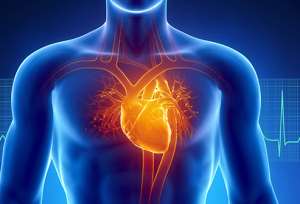
Diagnosing CVD is the first step in patients’ road to recovery. It is imperative to detect the disease early in order to administer treatment while it is still treatable. In addition, preventing the disease altogether is becoming more important in healthcare. The main approaches for detecting CVD are currently in vitro diagnostics (IVD) at point-of-care (POC) and the use artificial intelligence (AI) in cardiovascular imaging.
POC diagnostics devices enable tests to be performed where patients are, for example at their bedside. This technology offers a range of advantages over centralised laboratory tests. Minimal sample preparation is required. It generates results quickly (15-30 minutes on average), which can reduce the time to treatment and patient outcome. It renders diagnosis more accessible - especially for isolated areas where testing equipment is unavailable, expensive, or difficult to run without trained personnel.
An ideal POC diagnostic test is affordable, specific, sensitive, portable, rapid, and user-friendly. It should be suitable for use in low-resource or isolated settings. The aim of this technology is to limit lengths of hospital stay, reduce re-admissions, avoid unnecessary invasive tests, improve patient quality of life, reduce healthcare staff burden and decrease treatment costs.
The value of currently available POC diagnostic tests for CVD is limited by a number of drawbacks. Data can be variable, which reduces the reliability of the tests. False positives are also an issue. Importantly, tests must become more automated and user friendly to reduce the risk of human error and improve assay performance.
IDTechEx’s report, “ Cardiovascular Disease 2020-2030 ”, dives into the challenges of creating this technology and investigates the devices and approaches being developed to improve it. Four main types of POC diagnostic tests exist: lab-on-a-chip (LOAC), electrochemical test strips, lateral flow assays (LFAs) and molecular diagnostics (MDx). Each is discussed in IDTechEx’s report, complete with breakdown analysis of key players, emerging technologies, regulatory frameworks and more.
Aside from POC diagnostics, a particularly innovative strategy in CVD detection procedures is the integration of AI into cardiovascular imaging systems.
Medical imaging is the practice of imaging a section of the body to examine its function and overall health. It is a crucial diagnostic and treatment tool and is regularly used in healthcare settings today. Cardiovascular imaging refers to the use of medical imaging to examine the heart and blood vessels.
While they have been of tremendous value in the past, current cardiovascular imaging methods are no longer meeting the requirements of patients and physicians. They can be difficult to interpret and lengthy to process, which delays time to treatment. New methods are needed to keep up with demand and provide a higher standard of care.
The evolution of computing has given machines the ability to perform tasks and analyse facts independently of a human. This is known as AI.
Today’s healthcare organisations increasingly rely on digital technology. As a result, medical imaging systems are producing more data than ever before and are struggling to keep up with the amount generated. AI may be able to provide a solution to this problem. Thanks to AI software’s ability to extract information, recognise patterns and analyse data much more efficiently and quickly than humans, the use of AI in cardiovascular imaging is rapidly growing.
AI can, among other functions, build 3D virtual models and detect clots and blockages within blood vessels. It is being explored as a means to render the imaging process more efficient and to streamline the analysis process. It has the potential to refine diagnosis methods and minimise time to treatment, thus improving patient experience and outcome.
In short, CVD diagnosis methods are rapidly evolving and are the source of numerous technological innovations. IDTechEx’s report offers insights on a number of elements in this sector such as historical revenue data, market drivers & constraints, ongoing clinical trials and investments/funding - as well as how these factors impact the emergence of innovative technologies - to provide an in-depth assessment of recent and upcoming developments.
To find out more about Life Sciences research available from IDTechEx visit www.IDTechEx.com/LifeSci or to connect with others on this topic, IDTechEx Events is hosting: Healthcare Sensor Innovations 2020 Conference on 17 - 18 March 2020 in San Jose, USA. Please visit www.HealthcareSensorInnovations.com/USA
IDTechEx guides your strategic business decisions through its Research, Consultancy and Event products, helping you profit from emerging technologies. For more information on IDTechEx Research and Consultancy contact [email protected] or visit www.IDTechEx.com .




 We’ll no longer tolerate your empty, unwarranted attacks – TUC blasts Prof Adei
We’ll no longer tolerate your empty, unwarranted attacks – TUC blasts Prof Adei
 Bawumia donates GHc200,000 to support Madina fire victims
Bawumia donates GHc200,000 to support Madina fire victims
 IMF to disburse US$360million third tranche to Ghana without creditors MoU
IMF to disburse US$360million third tranche to Ghana without creditors MoU
 Truck owner share insights into train collision incident
Truck owner share insights into train collision incident
 Paramount chief of Bassare Traditional Area passes on
Paramount chief of Bassare Traditional Area passes on
 Two teachers in court over alleged illegal possession of BECE papers
Two teachers in court over alleged illegal possession of BECE papers
 Sunyani: Victim allegedly shot by traditional warriors appeals for justice
Sunyani: Victim allegedly shot by traditional warriors appeals for justice
 Mahama vows to scrap teacher licensure exams, review Free SHS policy
Mahama vows to scrap teacher licensure exams, review Free SHS policy
 Government will replace burnt Madina shops with a new three-story, 120-store fac...
Government will replace burnt Madina shops with a new three-story, 120-store fac...
